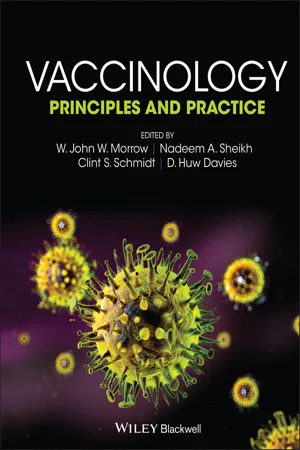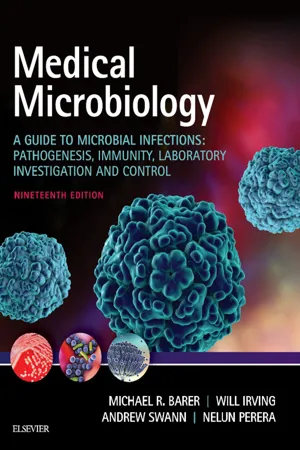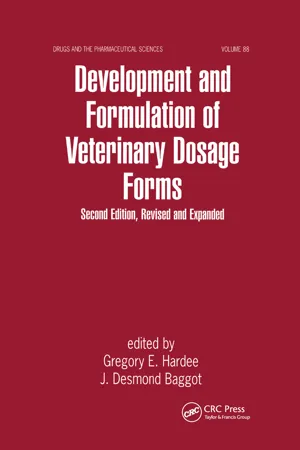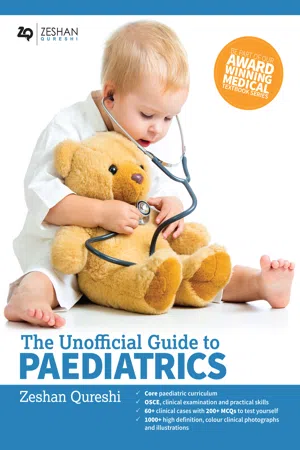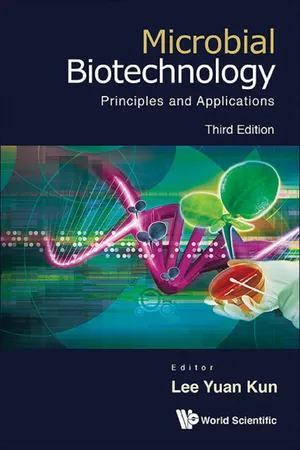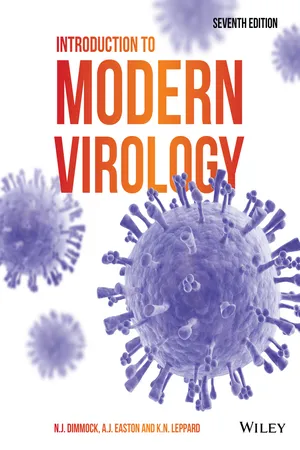Biological Sciences
Live Attenuated Vaccine
A live attenuated vaccine is a type of vaccine that contains a weakened form of the disease-causing microorganism. This weakened form is still alive but unable to cause disease. When administered, the vaccine stimulates the immune system to produce a protective response, providing immunity against the actual pathogen. Live attenuated vaccines often confer long-lasting immunity with just one or a few doses.
Written by Perlego with AI-assistance
Related key terms
Related key terms
1 of 4
Related key terms
1 of 3
8 Key excerpts on "Live Attenuated Vaccine"
- eBook - ePub
Synthetic Peptide Vaccine Models
Design, Synthesis, Purification and Characterization
- Mesut Karahan(Author)
- 2021(Publication Date)
- CRC Press(Publisher)
Studies on these vaccines are ongoing and there are different vaccine production studies against many diseases. In one study, the cDNA copy of a ZIKV Live Attenuated Vaccine genome was designed as a DNA plasmid to develop a DNA-initiated Live Attenuated Vaccine against the ZIKV virus and delivered to mice. As a result, it has prevented many symptoms of this disease, so it was emphasized that the Live Attenuated Vaccine can be an effective protection against RNA viruses because it is both easy and powerful (Zou et al. 2018).In another study, it was found that MTBVAC, a live attenuated Mycobacterium tuberculosis strain against tuberculosis, can create trained immunity through induction of glycolysis and glutaminolysis and accumulate traces of histone methylation in its promoters. As a result, it provided a strong MTBVAC-induced heterologous protection against a fatal threat by Streptococcus pneumoniae in an experimental mouse pneumonia model (Tarancón et al. 2020). In one study, the protection of live attenuated BPZE1 vaccine against B. pertussis disease and the effectiveness of intra-nasal administration of this vaccine was studied. To examine the immune responses induced in humans (n = 12) receiving BPZE1, the magnitude of the antibody responses was studied and the resulting findings and the killing mechanisms induced by BPZE1 were found to have a high potential to improve vaccine efficacy and protection against B. pertussis transmission (Lin et al. 2020).On the other hand, a Live Attenuated Vaccine has been produced for African swine fever seen in pigs. In this study, Chinese ASFV HLJ/18 was used as the backbone and a number of gene deleted viruses were produced. HLJ/18-7GD with seven deleted genes provided complete protection to pigs from African swine fever (Chen et al. 2020).2.4 Inactive Vaccine
Inactivated vaccines are produced by killing the disease-causing microbe with chemicals, heat, or radiation. The main reason for inactivation is the inability to attenuate the microorganism (attenuation) and the risk of returning to the mutant form. Most of the vaccines licensed to date have been developed based on “isolate, inactivate, and inject” the causative agent of disease (Pasteur’s principles) (Plotkin 2009). Inactivated vaccines are usually used with combinations or used as adjuvants. The adjuvant is used to increase the effect of the drug or the active substance of the vaccine (Altınsoy 2007). There are considerable differences at titer when the adjuvant is added and when the adjuvant is not added. Bacterial cell wall components, liposomes, and synthetic polymers often show an adjuvant effect. Inactive vaccines generally do not tend to cause infection; active vaccines can rarely cause local, specific, and risk-free infections in small areas (Pelit Arayıcı 2015). - eBook - ePub
Vaccinology
Principles and Practice
- W. John W. Morrow, Nadeem A. Sheikh, Clint S. Schmidt, D. Huw Davies(Authors)
- 2012(Publication Date)
- Wiley-Blackwell(Publisher)
In contrast, Live Attenuated Vaccines offer the potential advantage of administration via the natural route of infection to stimulate appropriate immune responses, often mucosal delivery inducing both systemic and mucosal immunity. Unlike killed and subunit vaccines, which are generally poor at inducing cellular immune responses, Live Attenuated Vaccines are able to induce cellular immune responses, which may be important for protection against intracellular bacterial pathogens. Such vaccines may also offer the further advantage of being easier and safer to administer than killed or subunit vaccines, which are given by injection.However, Live Attenuated Vaccines do have some limitations when compared to killed or sub-unit vaccines. Because they are live, they often require storage under carefully controlled conditions, and have limited shelf lives. More importantly, the ability of Live Attenuated Vaccines to induce protective immunity is dependent on a fine balance between ensuring the vaccine strain is able to survive in the host for a sufficient length of time and ensuring that the vaccine is sufficiently disabled that it is not able to cause disease. This latter consideration is especially important when the vaccine might be used in immunocompromised hosts. Newer approaches to the development of Live Attenuated Vaccines can help to minimize this problem, but some of the existing live attenuated bacterial vaccines are not considered to be safe for use in immunocompromised hosts.Existing Live Attenuated VaccinesMany of the live attenuated bacterial vaccines in use today have been generated using empirical approaches, and the reasons why these particular approaches were followed to generate the vaccines seems quite obscure. At the time of their discovery the genetic basis of attenuation was not known and for many live bacterial vaccines the molecular basis of attenuation is still not clear.It might be assumed that the availability of genome sequencing methodologies would now make the characterization and identification of attenuating mutations possible. In some cases this has proven to be the case, but for others the reasons for attenuation are still only partially understood. For example, although the genome sequence of the Bacille Calmette-Guérin (BCG) strain of Mycobacterium bovis - eBook - ePub
Medical Microbiology E-Book
A Guide to Microbial Infections
- Michael R. Barer, Will L Irving(Authors)
- 2018(Publication Date)
- Elsevier(Publisher)
It is possible to induce protective levels of antibody by vaccines developed from chemically disrupted or formaldehyde killed (inactivated) organisms. For example, this is achieved with vaccines against pertussis (whooping cough) and poliovirus (inactivated Salk vaccine).Attenuated live vaccines
For some organisms, the inactivation process can disrupt the antigenic components required to induce a protective immune response, so the resulting vaccine components lose their immunogenicity. Live vaccines use suspensions of organisms that are reduced or weakened in virulence (attenuated), but retain the ability to replicate in the recipient and therefore stimulate broad immune responses similar to those seen in natural infection. This strategy has produced mumps, measles, rubella (combined), varicella-zoster, polio, influenza, rotavirus and yellow fever vaccines.Sometimes it is possible to use a related organism with shared antigens as vaccines. The vaccinia virus vaccine was used to eradicate smallpox, and a modified bovine tubercle bacillus (bacille Calmette–Guérin, BCG) is used to protect humans against tuberculosis and leprosy.Special procedures
Some vaccines, such as those derived from influenza and pertussis are purified by processes to remove unwanted protein and other reactive materials, whilst retaining important antigens. Some purified polysaccharide antigens (meningococcal and pneumococcal organisms) must be conjugated to carrier proteins such as toxoids, or added to immune stimulating chemicals (adjuvants) to enhance immunogenicity. Increasingly, vaccines such as hepatitis B are molecularly engineered or developed from recombinant antigens.Immune response
Specific antibodies directed against some bacterial and viral infections may be present in maternal blood and are passively acquired by the baby. This offers some protection to the infant at a time when its own immune system is underdeveloped but could interfere with the infant's capacity to respond to the stimulus of injected or ingested vaccines in the very early months of life. Although the capacity of an infant to produce specific antibody to injected antigens is poorly developed in the first few months of life, this may be overcome by addition of adjuvants such as aluminium hydroxide and conjugation to toxoids. Combination of toxoids, pertussis antigen and conjugated polysaccharide antigens creates an effective immunising complex (diphtheria, tetanus, pertussis, polio and Haemophilus influenzae - Gregory E. Hardee, J. Desmond Baggo, Gregory E Hardee, J D Baggot(Authors)
- 2021(Publication Date)
- CRC Press(Publisher)
A. Basic Definitions
1. Biological Product
Refers to “all viruses, bacteria, sera, toxins, and analogous products of natural or synthetic origin, live microorganisms, killed microorganisms, and antigen immunizing components of microorganisms intended for use in diagnosis, treatment, or prevention of diseases in animals” (6 ).2. Toxoid
A sterile, soluble, nontoxic material prepared from growing bacteria, separating the bacterial cells from the culture fluids and rendering the soluble liquid nontoxic. Toxoids may also be prepared by chemical synthesis or using recombinant DNA technologies.A vaccine containing a live microorganism that has been rendered avirulent or incapable of causing disease when given to the target or host animal.3. Modified Live Vaccine
A live bacterium or virus determined to be nonpathogenic, by genetic manipulation or other means, and has encoded and expressed genes from another microorganism.4. Vector Vaccine
This refers to a whole viral or whole bacterial or whole parasitic vaccine in which the active component has been rendered nonviable.5. Killed or Inactivated Vaccine
A fragment of the microorganism that has been shown to be immunogenic and can be used in place of the whole microorganism.6. Subunit Vaccine
B. Regulatory Considerations
Regulatory agencies throughout the world vary in scope and practice in regard to governing the production of veterinary biologicals. In the United States, veterinary biologicals are regulated by the United States Department of Agriculture (USDA) as provided by the March 4, 1913, Act of Congress (37 stat. 832-833, 21 U.S.C. 151-158). There are three main branches of the USDA which are directly involved in the licensing of veterinary biologics: licensing, located in Riverdale, Maryland, which is responsible for licensing all new veterinary biologics; Veterinary Biologics Field Office (VFBO, Ames, Iowa), which has responsibility for inspecting manufacturing facilities for compliance and investigating incidence reports involving the use of veterinary biologics; and the National Veterinary Services Laboratory (NVSL, Ames, Iowa), which has responsibility for confirmatory testing, pre- and postlicensing as well as diagnostic services to the veterinary biologics industry (6 ,7- eBook - ePub
The Unofficial Guide to Paediatrics
Core Curriculum, OSCEs, clinical examinations, practical skills, 60+ clinical cases, 200+MCQs 1000+ high definition colour clinical photographs and illustrations
- Zeshan Qureshi(Author)
- 2017(Publication Date)
- Unofficial Guide to Medicine(Publisher)
Successful immunisation programmes rely on the principle of herd immunity. Herd immunity is achieved when uptake of immunisation increases above a certain threshold, leading to decreased transmission. This then lowers the incidence of disease in the overall population, protecting those who might be at risk but remain unvaccinated. The threshold varies for different diseases and depends on the specific disease and its transmission mode, amongst other factors.Important vaccine rules are shown in Box 1 .Live Attenuated VaccinesDifferent Types of VaccinesThese contain a weakened (or attenuated) form of the infective organism, and the body responds as it would do to an infection, creating long-lasting antibodies and thus immunity to the disease. The MMR, Bacillus Calmette-Guérin (BCG), varicella, nasal spray influenza vaccine and rotavirus vaccines are Live Attenuated Vaccines. Most live vaccines can now be given at any time before or after each other, with few exceptions. If a patient has recently received immunoglobulin, the live vaccine has a diminished immune response if given shortly before or for a long time afterwards, as immunoglobulin can neutralise vaccine antigens. Therefore, in such cases, one should wait at least three months before giving the vaccine.Box 1: Vaccine rules• Vaccines from different manufacturers can be mixed. However, it is preferable to use the same manufacturer (as the vaccines may have different antigen content or additives).• Most vaccines can be safely administered simultaneously at separate sites. There are specific rules for certain vaccines, e.g. yellow fever and MMR should be administered at least four weeks apart.• A lapse in the immunisation schedule does not require starting over.• Vaccinations must be documented on a formal immunisation record.• Only give the recommended dose.Inactivated VaccinesThese are vaccines where the organism has been killed (or inactivated). They usually stimulate a weaker immune response than live vaccines, meaning that several boosters are required. The immune response can be strengthened by conjugation, such as the addition of a protein. Inactivated vaccines include diphtheria, tetanus, pertussis, polio, Haemophilus influenzae - eBook - ePub
Microbial Biotechnology
Principles and Applications
- Yuan Kun Lee(Author)
- 2013(Publication Date)
- WSPC(Publisher)
et al. (2008) developed a live attenuated H7N3 virus vaccine using the six internal protein genes derived from cold adapted (25°C) donor A/ Ann Arbor/6/60 (H2N2) virus. The virus showed attenuation in mice and ferrets and intranasal immunization protected the subjects from the homologous and heterologous H7 challenges. Live vaccines against H9N2 and H5N1 have also been generated with the cold adapted donor backbone and the safety and efficacy in mice and ferrets have been verified. Phase I clinical evaluation of these vaccines is currently in progress. Safety concern due to the possible reas-sortment of live vaccine strains with other circulating influenza viruses is the main drawback of Live Attenuated Vaccines. Furthermore, attenuated live viruses require to be cultured in the embryonated pathogen-free eggs under sterile conditions to avoid any possible contaminations with other pathogens. This is an additional hurdle that limits the advancement of Live Attenuated Vaccines.Although attenuated vaccines are still commonly used for control of animal diseases today, they pose some risks of continued circulation at subclinical levels and as a result, their applications are not permitted in certain countries where eradication of the disease is being attempted. Recombinant technology, which will be described later, permits irreversible attenuation of pathogen by selectively removing genes that are necessary for virulence.(b) Gene-deleted vaccinesGene-deleted vaccines are engineered by deleting specific gene sequence, usually coding for its pathogenicity and virulence, from the genetic materialof a pathogen, resulting in the gene-deleted organism to be irreversibly attenuated. Furthermore, given that such organism is permanently “marked” from the pathogenic strain, when it is used as a vaccine, antibodies can be distinguished from that induced by the pathogenic strain when tested serologically.A classical example is the use of gene-deleted vaccine for the eradication of Aujeszky's disease. Aujeszky's disease or pseudorabies as it is otherwise called is found in most pig producing regions, is a herpes viral infection that affects the central nervous system leading to high mortality in piglets. There is an urgent need for its control in many countries. Vaccination with gene-deleted vaccine against pseudorabies is commonly practiced, and along with companion diagnostic tests, has successfully eradicated the disease in some countries. The pseudorabies vaccine is based on the deletion of the thymidine kinase gene from the virus, leading to its inability to replicate in the nerve cells to cause disease. The major glycoproteins gX, gI, gp50 and gp63 of pathogenic pseudorabies are not essential for either growth or virulence, and the virus appear to function normally when these genes are deleted (Fig. 14.13 - eBook - ePub
- Ian R. Tizard(Author)
- 2017(Publication Date)
- Saunders(Publisher)
Their virulence must be reduced so that, although still living, they can no longer cause disease. This process of reduction of virulence is called attenuation. The level of attenuation is critical to vaccine success. Underattenuation will result in residual virulence and disease; overattenuation may result in an ineffective vaccine. The traditional methods of attenuation were empirical, and there was little understanding of the changes induced by the attenuation process. They usually involved adapting organisms to growth in unusual conditions so that they lost their adaptation to their usual host. For example, the bacille Calmette-Guérin (BCG) strain of Mycobacterium bovis was rendered avirulent by being grown for 13 years on bile-saturated medium. The vaccine strain of anthrax was rendered avirulent by growth in 50% serum agar under an atmosphere rich in CO 2 so that it lost its ability to form a capsule. B. abortus strain 19 vaccine was grown under conditions in which there was a shortage of nutrients. Unfortunately, genetic stability cannot always be guaranteed in these attenuated strains. Back-mutation or genome reassortment using genes from related viruses may occur and attenuated organisms may redevelop virulence. A more reliable method of making bacteria avirulent is by genetic manipulation. For example, a modified live vaccine is available that contains streptomycin-dependent M. hemolytica and Pasteurella multocida. These mutants depend on the presence of streptomycin for growth. When they are administered to an animal, the absence of streptomycin will eventually result in the death of the bacteria, but not before they have stimulated a protective immune response. Viruses have traditionally been attenuated by growth in cells or species to which they are not naturally adapted. For example, rinderpest virus, which was normally a pathogen of cattle, was first attenuated by growth in rabbits - eBook - ePub
- Nigel J. Dimmock, Andrew J. Easton, Keith N. Leppard(Authors)
- 2015(Publication Date)
- Wiley-Blackwell(Publisher)
virus rescue. This requires techniques specific to each type of virus and is not yet possible for all virus types. At its simplest, all that is needed is to transfect the purified recombinant genome (DNA or RNA transcribed from cloned DNA as appropriate) into susceptible cells. However, many viruses also need some of their proteins to be supplied with the genome in order for any recombinant virus to be recovered. Some of the double-stranded RNA viruses remain refractory to all attempts at generating recombinant virus from cloned cDNA.30.1 Recombinant Viruses as Vaccines
Harmless or attenuated viral strains can be used as carriers for gene sequences derived from pathogenic viruses. When a host is infected with such a recombinant virus, it produces a protective immune response against the pathogenic virus.As discussed in Chapter 26 , there are two broad classes of viral vaccine: live agents that have been attenuated to eliminate their pathogenicity and killed preparations of either whole virus or purified components. Work over many years has led to the isolation of a number of genetically stable, safe live viral vaccines that are routinely deployed to protect against, e.g. measles and yellow fever. Vaccinia virus and its modern more attenuated derivatives such as modified vaccinia Ankara (MVA) also belong in this vaccine class, although vaccinia is no longer in widespread use because its target, smallpox virus (variola), has been eradicated (Box 26.1). Live vaccines have a number of practical and scientific advantages but when attempting to expand the range of vaccines to include new targets it is often not possible to achieve a suitable live vaccine derivative of the pathogenic virus. Recombinant viral vaccines offer a path to achieving the benefits of live vaccines for such difficult cases. The principle is to embed one or more genes from the target pathogen into the genome of an established attenuated viral vaccine strain or other non-pathogenic viral genome so that, when the recombinant vaccine is administered, its genes encode proteins from the target pathogen and hence elicit protective immune responses against it.The only live virus recombinant vaccine to have been widely used to date is a vaccinia-rabies recombinant that has been deployed to protect wildlife against rabies virus infection (Section 26.2) and hence, indirectly, to reduce human exposure to rabies virus. Vaccinia virus (a poxvirus) has a large double-stranded DNA genome approaching 200 kbp in length. The technology to manipulate its genome is explained in Box 30.1. What results is a recombinant virus where all the genes encoding structural proteins of the vaccinia virion remain. Thus the recombinant virions retain their normal protein composition but the added genes from the target, in this case the surface glycoprotein (G) gene of rabies virus, are expressed to produce protein within infected cells in the vaccine recipient. These are then presented as antigens to elicit a protective immune response against the target.
Index pages curate the most relevant extracts from our library of academic textbooks. They’ve been created using an in-house natural language model (NLM), each adding context and meaning to key research topics.
Explore more topic indexes
Explore more topic indexes
1 of 6
Explore more topic indexes
1 of 4

